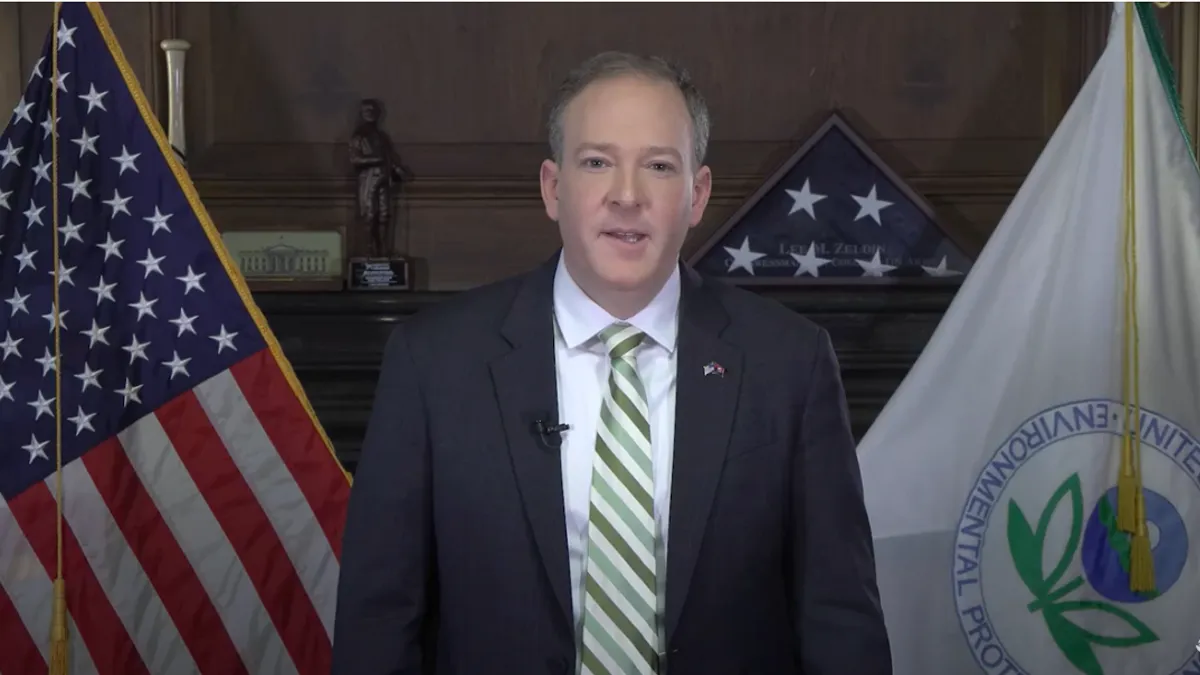In Rochester, Minnesota, Canada geese create problems. Parents don’t bring their children to certain playgrounds because there are so many geese, said Paul Widman, director of parks and recreation for the city. In addition, some trails are covered with so much feces that cyclists have slid off the trail. Geese also hang out at the city’s two beaches, affecting water quality.
In spring 2021, Rochester took action, oiling the geese’s eggs during their nesting period. Using this method, people coat eggs in corn oil to block the pores. That prevents air from reaching the embryo inside, quickly suffocating it. This approach leads to fewer geese being born, reducing the population. It’s common practice in the U.S. and recommended by The Humane Society.
Widman remembers the day that Rochester began oiling eggs. The city had announced what it would do with little feedback. On the first day of the egg oiling, 30 volunteers gathered in the park along with some residents. Widman said people came with protest signs, concerned about the egg oiling.
“We learned early on we just could not discount any kind of community engagement effort,” Widman said. It’s not the first time geese have created a debate in Rochester. In 2006, when there was potential for an avian influenza outbreak, the city considered lethal measures for the geese. It divided residents, and the city abandoned the idea.
In much of the U.S., an overpopulation of Canada geese leads to dirty parks, water contamination and other issues. They also drain public resources as cities must clean up after them; local governments turn to various methods to reduce their population.
“Everybody likes a few geese around,” said Paul Curtis, professor of wildlife science at Cornell University. “But when they're stepping on geese feces on the shoreline … people get fed up with it.”
Geese have had quite the comeback. Migratory Canada geese, which nest in the Hudson Bay and Canada, go north in the spring and south in the fall, Curtis said. In contrast, resident geese mostly live in one area without moving.
Then there are Branta canadensis Maximus, or the giant Canada goose, a type of resident goose. It was considered extinct until 1962 when biologists discovered the geese in Rochester were part of this subspecies. Charles Mayo, a founding doctor of the Mayo Clinic, brought some of these geese to his Rochester estate in the 1920s, and the population grew from there.
Conservationists rejoiced. The U.S. Fish and Wildlife Service and state wildlife agencies began a breeding program for the giant Canada geese to return it from the brink of extinction, said Curtis, who studies human-wildlife interactions, including geese.
“We did a really good job,” he said. In fact, so good that many states now have a goose overpopulation.
How cities are managing
Once geese settle into a pond and start nesting, they return to the same site each year and multiply, Curtis said.
That has become an issue in Des Moines, Iowa, as the city announced a goose management plan to deal with increasing public complaints in May.
“Park and rec property runs along riverways, lowland areas where there's water, mowed grass,” said Mike Gaul, parks manager for Des Moines. “It's a perfect environment for geese to hang out, just the same as people. And that's where the conflict starts.”
The city will use dogs to scare away geese from a location — a tactic called “goose agitation,” Gaul said. Des Moines will do habitat modification, too. It has already planted prairie grass around cemetery ponds that geese frequent, making them less likely to congregate in areas with tall grass because predators hide there. The city had seen some success with that method, Gaul said. It will build fencing in areas where prairie grass isn’t feasible.
Habitat modification is the least intensive measure cities use to deal with geese, said Curtis. But cities usually go beyond that method because alterations that worked 20 years ago now fail, he said. Geese are adaptable.
Moreover, using dogs to scare away the geese can be expensive and, in the end, only moves the problem somewhere else, Curtis said. He has also seen some schools use remote-controlled trucks and air dancers to remove geese from sports fields.
Communities then move on to oiling eggs, followed by roundups, in which biologists remove the birds from a city and, usually, euthanize them. States process the meat and donate it to local food banks, Curtis said.
There’s technology to combat geese populations, too. Gaul said Des Moines is considering a goose gun, which shoots blanks that make noise to condition geese to stay away from specific areas; it’s also looking at installing strobe lights. In Rochester, the parks department planted vegetation around Silver Lake years ago, but it still had constant trouble with geese, Widman said. It was time to take further action.
“The residents here have a real love-hate relationship with the geese. There's the rich history,” he said. “But then you have the mess.”
He said extreme measures wouldn’t go over well in Rochester, so he looked at non-lethal approaches. That led to egg oiling during the first year of geese management. In the second year, Rochester replaced the goose eggs with dummy ones made of ceramic or wood and disposed of the real eggs.
The city will continue the same practices next spring, Widman said. Officials hope the geese will realize that nesting in Rochester isn’t working and move somewhere else after a few years. The city has already seen fewer geese.
Rochester also relies on other methods to deter geese. For instance, the golf course uses coyote silhouettes and allows people to walk their dogs leash-free to scare away geese. The city doesn’t use devices like strobe lights because Widman heard from colleagues that the geese get used to them.
Meanwhile, Rochester worked to explain the geese problem to residents and show the difference between migratory and resident geese. After some people protested during the first year of egg oiling, Widman said there was no resident pushback this past spring.
Geese management is a controversial topic in some places, so community leaders need to prepare for pushback, Curtis said. Foster City, California, got national attention after the public became aware it was considering euthanizing 100 geese.
“It varies community by community,” he said. “But that's what city governments kind of deal with: the various stakeholders and their wishes for managing the problems.”



















